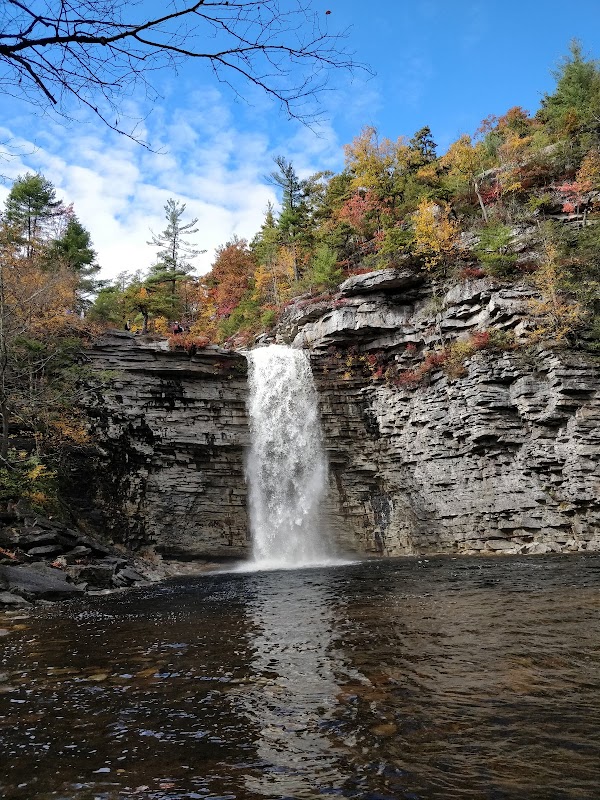
Historic Farm Tours in Durham, Connecticut: Exploring Heritage and Landscape
Experience Durham, Connecticut’s historic farm tours—where gentle trails meet centuries-old farmland. Discover working farms, rolling fields, and quiet streams while walking accessible routes steeped in local heritage.
Wear Robust Footwear
Choose hiking boots or trail shoes with good traction to handle dirt, mud, and uneven pathways typical of farm trails.
Stay Hydrated
Pack at least 1 to 2 liters of water, since farm facilities may not have public water access during tours.
Visit During Off-Peak Hours
Early mornings or late afternoons bring cooler temperatures and fewer visitors, improving the farm experience and photography lighting.
Respect Farm Animals and Crops
Observe animals calmly without feeding and stay on marked paths to protect crops and avoid disrupting farm work.
Historic Farm Tours in Durham, Connecticut: Exploring Heritage and Landscape
Durham, Connecticut offers a unique journey where the past meets the outdoors through its historic farm tours. These tours bring you along gently rolling fields, weathered barnyards, and quiet stands of forest that have witnessed centuries of change. The terrain is manageable—mostly flat with occasional gentle slopes—making it accessible for casual walkers and avid hikers alike. Expect paths comprised of dirt lanes and grassy trails, often bordered by stone walls standing firm as testaments to the early settlers’ mark on the land.
A typical farm tour stretches about 3 to 5 miles depending on the route, with minimal elevation gains—around 150 feet at most—allowing you to focus on the rich heritage and the natural surroundings rather than rugged topography. The air carries the scent of earth and growing things, while fields quietly encourage exploration. Here, rivers and streams weave through the landscape, daring you to stop and listen to their unhurried rush.
Tours typically begin in the heart of Durham, at farms still operating with a blend of historical practices and modern sustainability. You’ll meet farmers who maintain heirloom crops and heritage breeds, giving visitors a firsthand look at working farms that have evolved but remain fiercely themselves. Walking past orchards heavy with early-season blossoms or late-summer apples, the landscape feels alive yet grounded, shaped by human hands and natural cycles.
Practical planning for these tours is straightforward: wear sturdy walking shoes with good grip for muddy patches and uneven ground. Bring water bottles—most farms lack taps—and plan your visit between mid-May and late October for optimal weather and farm activity. Early mornings or late afternoons provide cooler temperatures and softer light, perfect for immersive experiences or photography.
Durham’s historical farms are not just preserved relics but living places where adventure and learning weave together. The environment commands respect: the soil beneath your feet is compacted by generations, the trees shade like guardians, and the seasonal changes draw you into the flow of rural life. These tours encourage a reflective pace, inviting visitors to engage with the land’s story while moving steadily forward.
Whether you’re a local resident or visiting from nearby cities, incorporating a historic farm tour into your itinerary offers a refreshing alternative to conventional hiking. It’s a call to explore landscape and heritage simultaneously, grounded in practical trail knowledge and driven by the quiet excitement of discovery.
Nearby Trips
All Adventures
Boat Charters
Water Activities
Adventures near Durham, Connecticut
Discover the unique and memorable adventures that make Durham, Connecticut special.
Frequently Asked Questions
Are the farm tours guided or self-paced?
Most farm tours in Durham are guided, providing historical context and insights to farming practices, but some farms offer self-guided options with maps and signage.
Can I bring children or pets on the tours?
Children are welcome, making these tours family-friendly experiences. Pets are generally discouraged to protect farm animals and crops; check individual farm policies before visiting.
Are the trails wheelchair accessible?
Due to the natural terrain and uneven farm paths, wheelchair accessibility is limited. Some farmyards may have gravel paths, but overall, tours are best suited for walkers with full mobility.
What wildlife might I encounter during the tours?
You might spot white-tailed deer, red foxes, and a variety of bird species such as Eastern bluebirds and red-tailed hawks. In fields and near water, dragonflies and butterflies add color to the scene.
Is there a fee to join these historic farm tours?
Generally, farm tours in Durham are low-cost or donation-based. Some farms may charge a small entrance fee or ask for contributions supporting preservation efforts.
Are there restrooms available during the tours?
Restroom availability varies by farm. Some have basic facilities for visitors, but it’s advisable to plan accordingly before starting your tour.
Recommended Gear
Sturdy Hiking Shoes
Protects feet on uneven or muddy farm paths and provides necessary traction.
Water Bottle
Staying hydrated is critical as water sources may not be available onsite.
Sun Hat and Sunscreen
Essential during summer months to protect from sun exposure on open fields.
Light Rain Jacket
Rain showers are common in spring, so a water-resistant layer is useful.
Local Insights
Hidden Gems
- "The viewing knoll behind Goff Family Farm offers an unobstructed panorama of the Connecticut River Valley rarely noted in guidebooks."
- "A small pond tucked near the outskirts of Chase Orchard is a quiet spot favored by local birdwatchers, especially during migration seasons."
Wildlife
- "Look out for field sparrows darting through crops and the flash of garter snakes sunning on warm rocks."
- "During early spring, turkey broods can be spotted on quieter farm edges."
History
"Durham’s farms trace their origins back to 17th-century settlements, with many stone walls, barns, and house foundations dating to colonial times. These farmsteads illustrate evolving agricultural methods reflective of New England’s rural development."